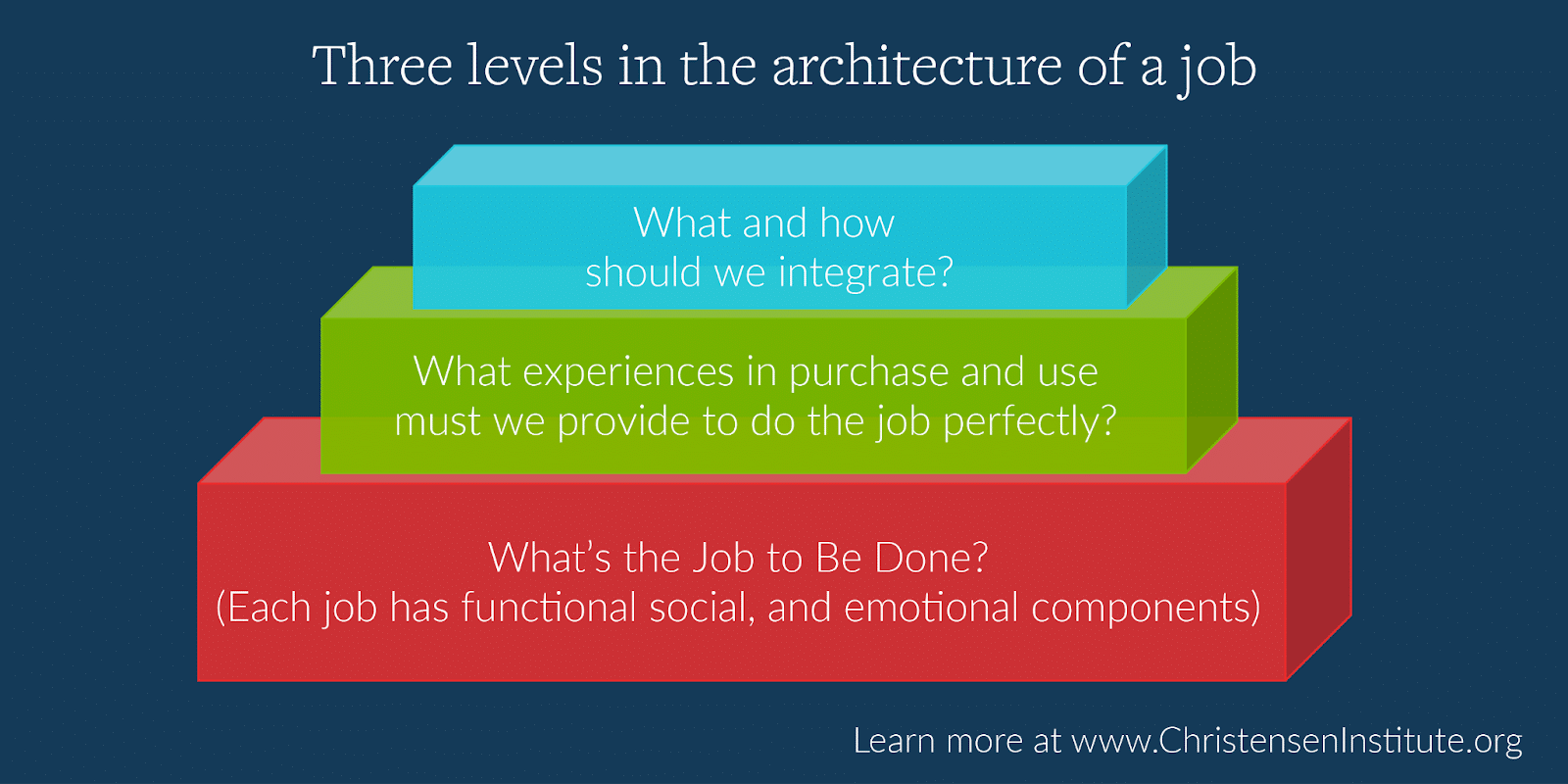More than half of all people incarcerated in the United States have mental health issues, according to a report from the Bureau of Justice Statistics (BJS). In fact, every year 1.2 million individuals living with a mental illness are not receiving care because they are in prison.
Individuals with mental health conditions need to be provided with mental health care, not unnecessary incarceration.
One way that US policymakers and social justice organizations are addressing this issue is to reassign responsibilities–or the Job to Be Done–of different stakeholders in the criminal justice system.
The theory of Jobs to Be Done is a framework to think about customer behavior and priorities, breaking them down by framing consumption as jobs to be accomplished. There are three levels in the architecture of a job: the job itself, the experiences provided when the job is fulfilled, and the integration of an organization’s resources to get the job done for customers. By accurately addressing all three levels innovators can design products or services that align with what customers are already trying to accomplish.
This theory however, is not limited to customer consumption. The same framework can be applied to understand many priorities, including those in the criminal justice system.

The United States’ new 988 hotline
To properly address mental health realities in the criminal justice system, law enforcement will no longer be required to deal with crises they are not trained to manage. On July 16, 2022, the United States transitioned the 988 hotline from the National Suicide Prevention Hotline to the “Suicide and Crisis” Hotline. This should not only lead to unnecessary interactions and arrests, but also better public safety. As fewer law enforcement officers attend to mental health issues, more of them can ensure public safety.
911 was originally piloted in 1967 to address the needs of modern society, including increased incidences of crimes, accidents, and medical emergencies, as well as the inadequacy of existing emergency reporting methods. For 40 years it has served as the vital link between the public and emergency services, receiving 240 million calls a year. But the needs of today’s society have expanded and shifted. 911 was not set up to address mental health needs leaving a gap in mental health crisis care.
That’s why the new 988 hotline is so important.
988 has received 23 million calls total since 2005, a relatively small number compared to the 240 million a year that 911 receives. But the new 988 hotline is meant to alleviate this imbalance by connecting people in crises to trained counselors who listen to the caller’s problem and provide support and resources as necessary. Although 988 works in tandem with 911, law enforcement officers or medical responders will only be dispatched when necessary. Currently fewer than 2% of callers need to be connected to emergency services.
988 is not only an alternative to unnecessary, traumatic, and often tragic interaction with law enforcement, but also an opportunity to provide much needed care first.
If adequately operated and funded, the new 988 hotline will nail the “Job” of prioritizing mental health crisis care. It will ameliorate consumer – in this case people having mental health crises – experience by connecting them to trained counselors as opposed to untrained law enforcement. And by serving as an alternative to 911, it will prevent the unnecessary integration of public resources to solve the wrong problems.
Assessing the transition of 988 hotline from just suicide prevention to suicide and crisis provides us with deep insights for designing more relevant and efficient public programs.
What if more programs in the United States and around the world approached problems using the lens of the Jobs theory?
Although the United States is a wealthy country, there are, undeniably, pockets of underdevelopment. If the United States and other countries–rich or poor– approach their struggles, economic, social or otherwise, through the lens of Jobs to Be Done then the world will have a much better shot at achieving true inclusive prosperity. The launch of the 988 program is a great step in the right direction.



